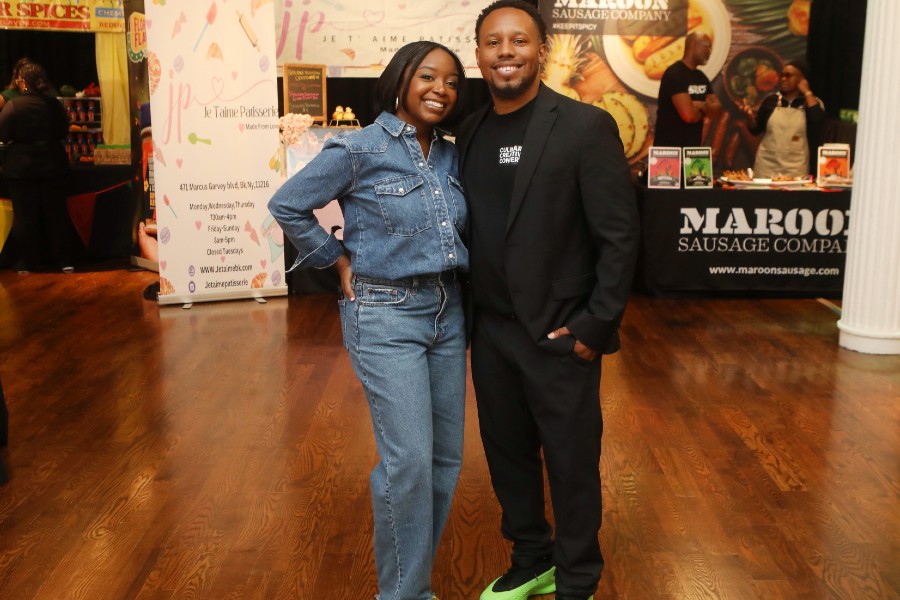 The Business Of Fashion reports that Olu Michael Odukoya is an art director, publisher and curator, who has worked with high profile brands and galleries, both independently and through his boutique creative agency OMO Creates. Earlier in his career, he worked with then Yves Saint Laurent creative director Stefano Pilati as art director of the brand’s advertising campaigns. He was also the launch art director of Pop magazine and currently publishes two independent art and style magazine, Kilimanjaro and Modern Matter.
The Business Of Fashion reports that Olu Michael Odukoya is an art director, publisher and curator, who has worked with high profile brands and galleries, both independently and through his boutique creative agency OMO Creates. Earlier in his career, he worked with then Yves Saint Laurent creative director Stefano Pilati as art director of the brand’s advertising campaigns. He was also the launch art director of Pop magazine and currently publishes two independent art and style magazine, Kilimanjaro and Modern Matter.
BoF: Please describe your current role.
OO: I am an art director, curator and publisher, working both at my boutique creative agency OMO Creates and at the two magazines which I produce, Kilimanjaro and Modern Matter. What I provide, as a service, is personal and private creativity in a commercial context; my focus is applying the approaches to concept and metaphor typically found in art to other, more ‘accessible’ projects. Rather than simply looking to be creative with external appearance, and with final outcome, I look for existing threads of creativity within a project and within the brand, individual or gallery behind the project and I weave them into something which feels curated, personal and intimate. It’s about engineering creative DNA to make solutions — to find less obvious answers to the problems which I am faced with at the start of a brief.
This is the approach which led to my working as an art director at Yves Saint Laurent with Stefano Pilati, producing campaigns with him, and it’s also the thing which has led to my working with galleries like Hauser & Wirth and artists like Oscar Murillo on publications, as a collaborator rather than simply an editor.
BoF: What attracted you to the role?
OO: I effectively created a role for myself because I saw a gap which I could fill — I realized that there were no creative agencies which provided a genuinely “artistic” service. More than a service, though, I realized that I could provide a whole working method; something more about development than simple presentation, which bridges the gap between subject and client. Communication, to me, is a genuine art form.
As far as publishing magazines is concerned: my favourite album is Ornette Coleman’s The Shape Of Jazz To Come, so the idea of looking into the future – the idea of looking at what feels contemporary – has always been something I’ve liked. And magazines are, quite simply, a perfect medium for that.
BoF: What is the most exciting project or initiative you have worked on?
OO: I’m very much enjoying the books I’ve been making with galleries and artists over the last year, and I have to say, it’s been wonderful seeing Modern Matter’s popularity grow, and hearing people that I respect, like Hans Ulrich Obrist and Peter Saville, say kind things about it. The most exciting project I work on, though, will always be the next one, because I am always hungry for a new challenge.
And if I had to choose just one thing that I’m the most proud of, I’d probably choose my daughter.
BoF: How is your role changing? What are the forces driving this change?
OO: In the simplest sense, my role has changed because the projects I’m working on are more numerous, more high-profile, and give me a greater degree of creative freedom. It’s a privilege to be able to work with, say, gallerists like Sadie Coles or Iwan Wirth on a project, or artists like Roni Horn and Sarah Lucas.
More than that, though, as a magazine editor, it’s impossible not to be affected by the development of the internet. It would be easy to see the digital revolution as the downfall of print, but I think that we should see it as the opposite, in some ways: we can learn approaches from the online world and apply them to an analogue format in a way, which is really quite fascinating. It’s worth remembering that actually, the ideas behind Tumblr first began in print – Maurizio Cattelan’s Permanent Food or Hans Peter Feldmann’s Voyeur were doing the same kind of image collection long before it began.
Ultimately, the rise of “absorber” culture as a direct result of the internet has been useful for me, because it has separated what I do from a large part of the industry. I am a provider rather than an absorber, and this is a more notable distinction in the digital age. There will always be an advantage for those who produce things to connect with people, rather than making them automatically.
BoF: Tell us about a time you failed and how you learned from it.
OO: I actually spoke to Jefferson Hack about this in a previous issue of the Modern Matter — we both agreed that mistakes can be useful in terms of allowing a project to have a degree of humanity (which, as I say, is important). Especially in a magazine, where you know you can try again with the next edition.
BoF: What advice do you have for people who are interested in doing what you do?
OO: I would recommend that anyone wanting to work in this field recognize that creativity is largely about problem-solving. Your work becomes part of a long chain of responses — you take in the stimuli around you and you look for a way to solve the problems that they present to you, and then you create your own new propositions. And maybe those, in turn, will be solved by another creative in the future. The key is learning to express other people’s experiences in such a way that they feel they’re reliving them: again, it’s all about being a good communicator. And respect — both earning it, and paying it.
They always say that time changes things, but actually you have to change them yourself.
It’s hard work, too — a sixteen-hour day is not a wholly unusual one for me. People often forget about the side of creative life which is pure hard graft! There’s an Andy Warhol quote which I bear in mind whenever I’m working on a new project: “They always say that time changes things, but actually you have to change them yourself.”
Become a Harlem Insider!
By submitting this form, you are consenting to receive marketing emails from: . You can revoke your consent to receive emails at any time by using the SafeUnsubscribe® link, found at the bottom of every email. Emails are serviced by Constant Contact


















